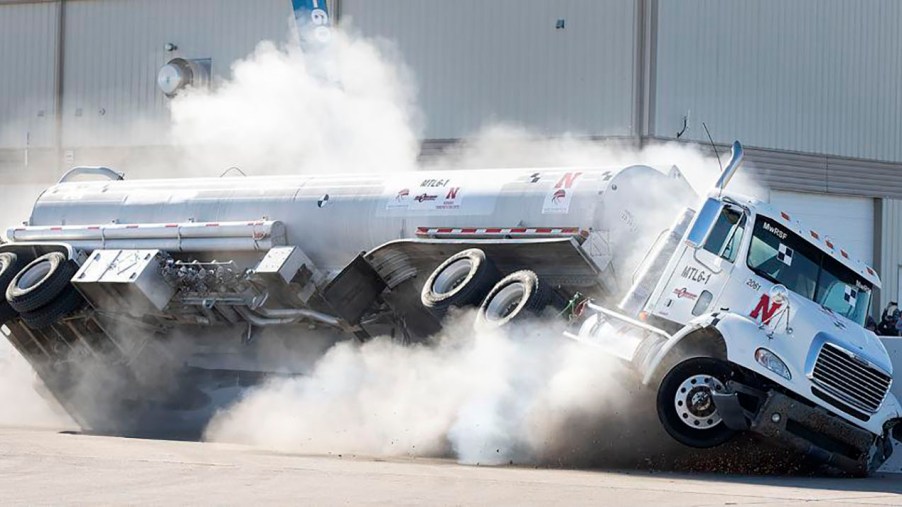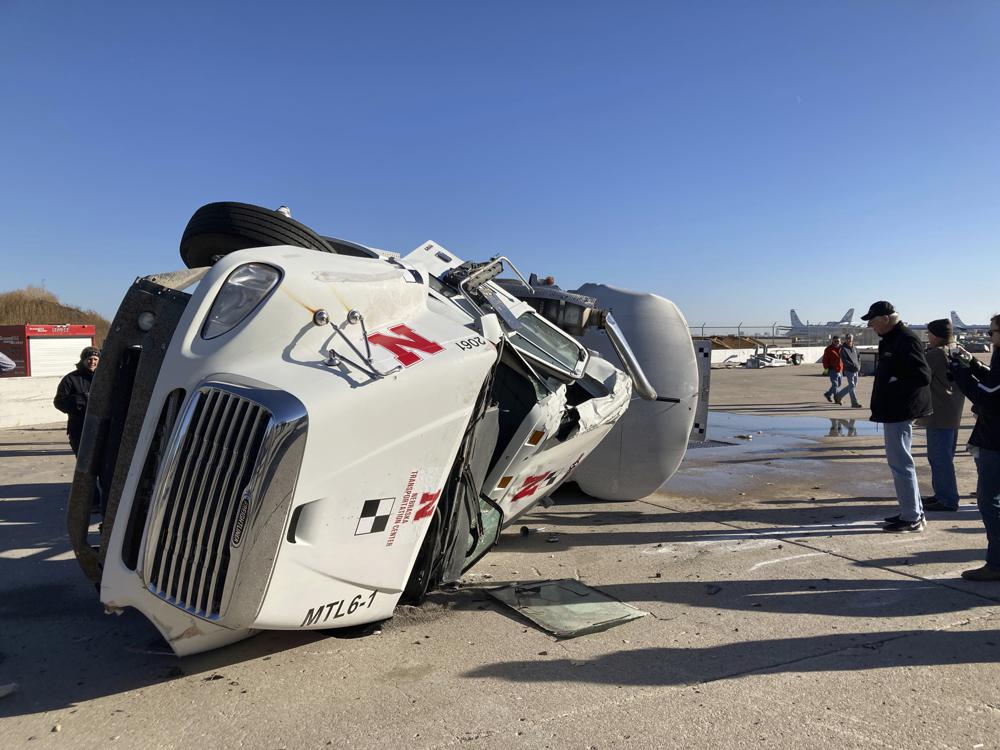
Watch: Semi-Truck Test Crashed Into New Freeway Median Barrier
Have you ever wondered about those concrete highway barriers that contain traffic from swerving into oncoming traffic? Like, wondered if they actually work? Well, sometimes they don’t. So the University of Nebraska Lincoln (UNL) created a new barrier. But to prove its strength, it needed to conduct a crash test. Students filmed driving a semi-tanker into it to see what would happen.
UNL has a safety think tank called the Midwest Roadside Safety Facility. It performed a safety performance evaluation of its design for a new type of truck median barrier. The goal is to see if the tanker would be contained and not enter opposing traffic, and generally to make our nation’s highways safer.
The facility rigged a semi-truck tanker with 6,700 lbs of water at their Outdoor Proving Grounds located at the Lincoln Municipal Airport. Surprisingly, this is the first test of this kind conducted in more than 30 years. So we have to assume, based on that information, the barriers used on today’s highways were tested before many reading this were born.
Here’s the video of the crash test
This new type of barrier is 28 inches shorter than the current barriers in use. It is also cheaper by a factor of five. But does it contain loaded runaway semi-truck any better?
The test involved hooking up the semi-truck to cables, then pulling it for about ¾ of a mile. Then the cables are released when the truck hits around 65 mph. From calculations, the truck will impact the barrier at a specific spot, and then the drama begins.
The crash test was viewed by all 50 states

The barriers contain sensors that measure the impact. Readings will be taken to determine the efficacy of the barriers. These types of crashes are not common, but when they happen they can be catastrophic. During the crash, inspectors from all 50 states watched it happen with a live online feed.
Only the top edge of the barrier was slightly damaged, and only a tire scuff mark was visible. So the successful University of Nebraska Lincoln test might lead to better barriers with better results than current ones. And, they’ll cost municipalities less.
As an added bonus, Texas A&M recently tested a barrier it devised to help protect US embassies throughout the world. Suicide bombers can drive into embassies before detonating their bombs, with horrific results. So the purpose of these tests is to contain this type of attack away from the actual buildings.
Bonus: Embassy barrier crash test
In this test, the dummy truck was remotely driven into the barrier. As you can see from the many angles recording the impact, the truck cab was literally sheared in half. Besides stopping the truck at the barrier, it would have also instantly killed the driver. It is a very dramatic conclusion to a potentially catastrophic result.
While we would like to not think about the need for these types of protections, it is good to know that researchers are investigating ways to keep innocent people alive in these times of increased violence.



